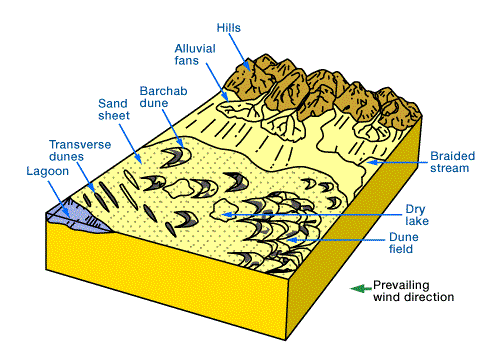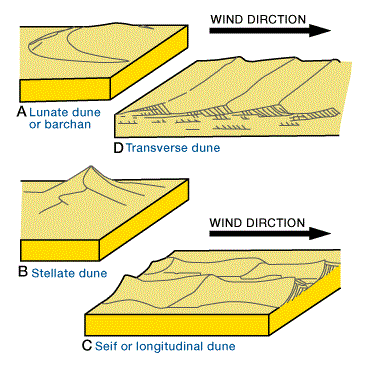Introduction
Petroleum geology, a branch of geology that focuses on the origin, exploration, and extraction of hydrocarbon resources, encompasses various environments where oil and gas are formed and accumulated. One such environment of interest is the eolian environment, which plays a significant role in petroleum accumulation. In this article, we will delve into the eolian environment in petroleum geology and explore its unique characteristics, the factors influencing oil formation, reservoir types, case studies, challenges, and future prospects.
Understanding the Eolian Environment
The eolian environment refers to the processes and landforms associated with wind-driven sediment transport and deposition. It primarily occurs in arid or semi-arid regions where there is a lack of vegetation to stabilize the soil, allowing the wind to transport and deposit sediments. These sediments commonly consist of well-sorted sand grains, making eolian environments excellent candidates for petroleum accumulation.
The eolian environment, also known as the aeolian environment, refers to the processes and landforms associated with wind-driven sediment transport and deposition. It is characterized by the continuous interaction between wind, sediment, and topography. Understanding eolian environments is crucial in petroleum geology as they can serve as potential reservoirs, affect fluid flow dynamics, and influence the overall exploration and production strategy.
Definition of Eolian Environment
An eolian environment is a geomorphic setting where the primary agent of sediment transport and deposition is wind. It is typically devoid of significant surface water bodies and is dominated by extensive sand dunes, sandy plains, and other wind-formed landforms. The eolian depositional system consists of a source area, transport pathway, and depositional area, where sediments accumulate due to wind action.
Eolian Environments, most of the earth’s desert regions are in a state of approximate depositional equilibrium, i.e., where sedimentation and erosion command equal influence. Fully 25% to 30% of the planet’s surface is arid or semiarid; most of this, however, is composed of bedrock plains, gravel pavement, and flat sand areas. Only about one-quarter is covered by eolian (wind-blown) sand deposits, which require a high supply of detritus and sufficient wind velocity to move it. Often, as shown in Figure 1 (Idealized block diagram of a generic desert environment),

this means close association with environments characterized by coastal orogenic activity, such as alluvial fans, braided streams, and beaches (e.g., Western North and South America, Mexico) or vast peneplain regions that act as catch areas for sand transported by very strong, perennial winds (central Mongolia, Arabia, Northern Africa, Central Australia).
When wind blows across a desert, silt and clay are carried higher up into the atmosphere and ultimately may be transported great distances to the oceans. Dust that does resettle in the desert may be trapped and form beds in ephemeral lakes, such as playas. Sand, by contrast, is transported close to the ground largely by the “leaping” process, which geologists call saltation. This is triggered partly by hydrodynamic lift and partly by energy transfer from grain collisions. Wind velocities are seldom sufficiently high to transport gravel.
The bed forms that sand settles into when transported by wind are mainly asymmetric ripples and dunes whose overall geometry is much like that of their subaqueous counterparts. (Figure 2, Four main types of sand dunes, as identified from modern deserts.

Only transverse and, less significantly, barchan dunes appear to be represented in the sedimentary record. Seif and stellate forms seem to represent environments of equilibrium, where sand is moved and reworked, but no important net sedimentation occurs.) The dynamics of eolian and aqueous movement are basically similar: they both involve granular solids being moved by and within “fluids.” This is most likely the main reason why the eolian environment is particularly difficult to distinguish in the subsurface.
As with alluvial fan and braided stream facies, preserved eolian sequences are best known in rocks of the Late Paleozoic Mid-Mesozoic age, with the Permain period having been especially hospitable to the development of large coastal sand seas. At the same time, northern Africa, by virtue of having occupied approximately the same latitude for nearly all of the Phanerozoic, shows a much more extensive time of eolian deposition.
 Petro Shine The Place for Oil and Gas Professionals.
Petro Shine The Place for Oil and Gas Professionals.



